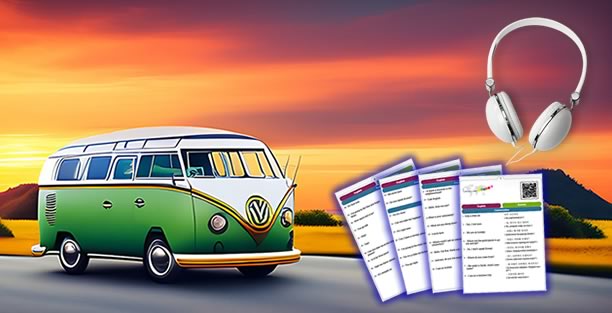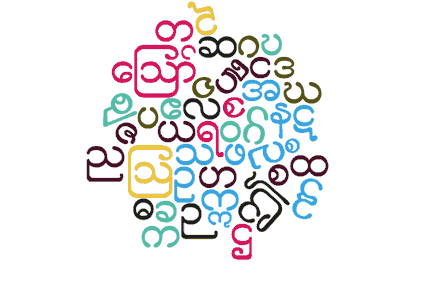Learn Burmese
10%
?
| English | Burmese | |||
|---|---|---|---|---|
| Hello | မဂၤလာပါရွင္ | |||
| Good evening | မဂၤလာပါရွင္ | |||
| Goodbye | သြားေတာ႔မယ္ | |||
| See you later | ေတြ႕မယ္ေနာ္ | |||
| Yes | ဟုတ္ကဲ့ | |||
| No | မဟုတ္ဘူး | |||
| Excuse me! | နေပါဦး | |||
| Excuse me | နေပါဦး | |||
| Thanks | ေက်းဇူးတင္ပါတယ္ | |||
| Thanks a lot | ေက်းဇူးအမ်ားၾကီးတင္ပါတယ္ | |||
| Thank you for your help | ကူညီတဲ့အတြက္ေက်းဇူးတင္ပါတယ္ | |||
| You’re welcome | ကိစၥမရွိပါဘူး | |||
| Okay | ေကာင္းပါျပီ | |||
| How much is it? | ဒါဘယ္ေလာက္ပါလဲ | |||
| Sorry! | စိတ္မရွိပါနဲ႕ခင္ဗ်ာ | |||
| Sorry! | စိတ္မရွိပါနဲ႕ရွင္ | |||
| I don't understand | နားမလည္ပါဘူး | |||
| I get it | သိျပီ | |||
| I get it | နားလည္ျပီ | |||
| I don't know | မသိဘူး | |||
| Forbidden | ခြင့္မျပဳ | |||
| Forbidden | မလုပ္ရ | |||
| Excuse me, where are the toilets? | အိမ္သာဘယ္မွာရွိပါသလဲ | |||
| Happy New Year! | မဂၤလာႏွစ္သစ္ပါ | |||
| Happy Birthday! | ေမြးေန႕မွာေပ်ာ္ရႊင္ပါေစ | |||
| Happy Holidays! | မဲရီး ခရစ္စမတ္စ္ /Merry Christmas | |||
| Congratulations! | ဂုဏ္ယူပါတယ္ | |||
| Congratulations! | ဂုဏ္ယူ၀မ္းေျမာက္ပါတယ္ |
View the learning path
All courses
Objectives This course aims to give travelers the tools they need to quickly master essential expressions in Burmese for everyday situations, such as greeting someone, asking for directions, or ordering a dish in a restaurant. By the end of the course, learners will be able to communicate with simple words on their next trip to Myanmar.
View the presentation
How to learn Burmese by yourself? Start with an easy and free online course!
We have adopted an objective and efficient approach to learn how to speak a language easily and quickly: we suggest you to start by memorizing words, phrases and practical expressions that you can use in everyday life and that will be useful when traveling.Getting used to pronounce words out loud, numbers for instance, is an easy exercise that you can practice often and at anytime throughout the day.
It will help you to get used to the sounds of your chosen language and thus make it more familiar.
And once your holidays have begun, in Yangon, Bagan or elsewhere in Burma, you will be surprised how familiar and easy to understand it will seem.
Furthermore, using a pocket dictionary is always useful, particularly during a trip. It enables you to find the translation of new words and enrich your vocabulary.
Why speak Burmese while traveling?
A destination of many natural and religious sites
Bordered by the Andaman Sea and the Bay of Bengal, Burma - also called Myanmar - is the largest state in mainland Southeast Asia. Burma shares borders with India, China, Bangladesh, Laos and Thailand, countries that have significantly influenced the creation of a diverse culture. In fact, there are many ethnic and cultural minorities in this country.As Buddhism is the most widely practiced religion, the country has many majestic temples and pagodas that attract visitors from around the world, who come to admire Inle Lake or the Hpa-An region, the royal towns of Mandalay, its mountainous areas (which sometimes resemble those of Switzerland!), and its beautiful coast, lined with islands.
Make a success of your stay in Burma
Whether you are going to spend a few days with friends for a leisure trip or if you are on a business trip, nothing will be more useful to you than to be able to slip a few words in the language of your interlocutors, who will appreciate your effort and will be certainly more willing to help.How to succeed in having good pronunciation within a week to a month?
It will be necessary to master the tones - which are an essential component of this language.A language which is isolating (its words are invariable) and agglutinative (morphemes with a specific meaning are added to words), Burmese is also a tonal language, with three tones: high, low and descending. These tones distinguish words, hence their importance.
Among the useful tips for learning the pronunciation of Burmese, we can point out the fact that the R has almost disappeared, today pronounced J, and the presence of aspirated unvoiced consonants (consonant + aspiration).
Here are some other examples of pronunciation:
The W is pronounced as the W of "what" in English.
The H is pronounced aspirated as in English.
The ɲ is pronounced GN, as "campagne" in French.
We invite you to listen to the pronunciation of the letters by clicking on the following link: Burmese alphabet with audio.
See all comments






